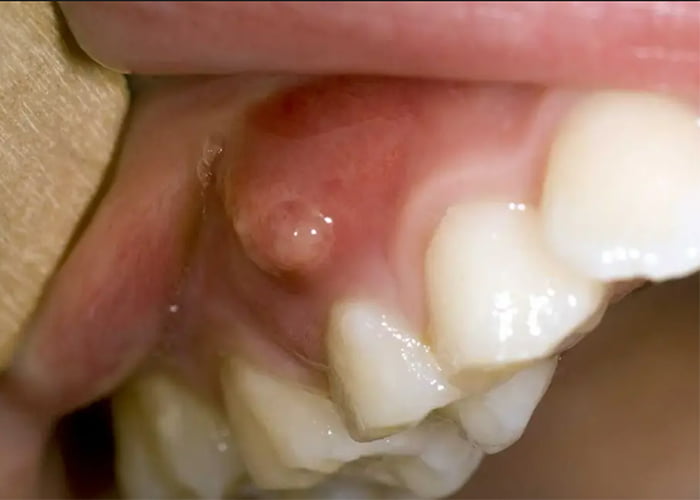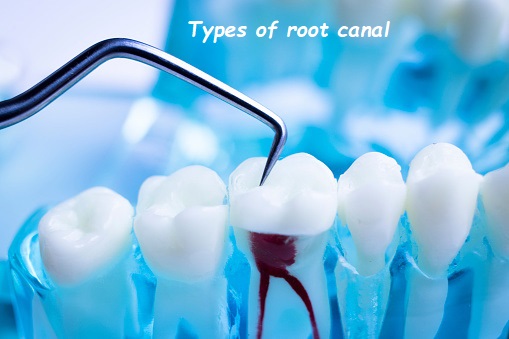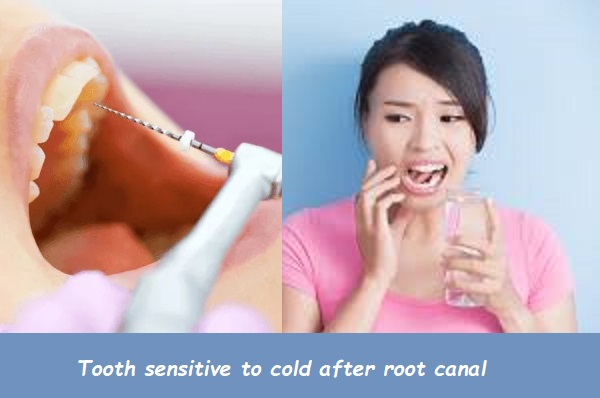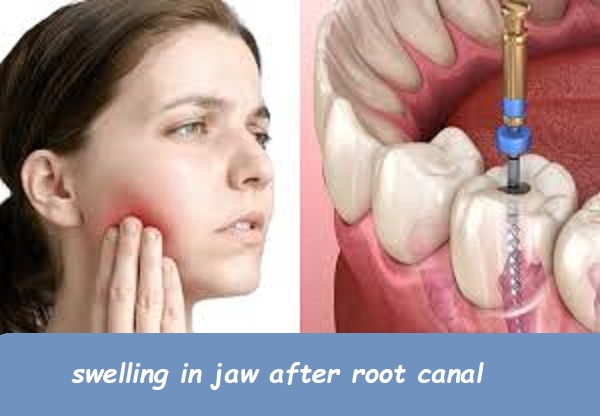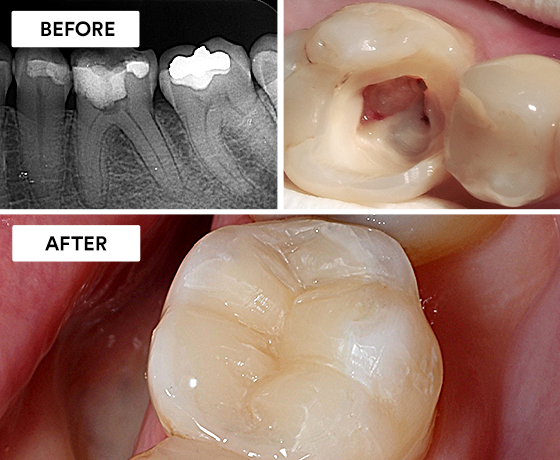Root Canal Aftercare
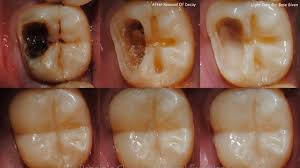
Undergoing a root canal can be an anxiety-inducing experience for many, but proper aftercare can make a significant difference in recovery and long-term oral health. Root canal aftercare is crucial to ensure that the procedure is successful and that the affected tooth remains healthy. In this comprehensive guide, we will explore everything you need to know about root canal aftercare, including what to expect immediately after the procedure, essential tips for care, potential complications, and long-term maintenance.
Chapter 1: Understanding the Root Canal Procedure
What is a Root Canal?
A root canal is a dental procedure used to treat infection at the center of a tooth (the root canal system). This treatment is necessary when the pulp, which is composed of nerves and blood vessels, becomes infected or damaged. The procedure involves:
- Removal of Infected Pulp: The dentist or endodontist removes the infected or damaged pulp from the tooth.
- Cleaning and Shaping: The inside of the tooth is then cleaned, disinfected, and shaped to prepare for filling.
- Filling and Sealing: The cleaned and shaped root canal is filled with a biocompatible material, usually gutta-percha, and sealed to prevent future infection.
Understanding the root canal procedure helps in appreciating the importance of proper root canal aftercare to ensure the treated tooth heals correctly and functions properly.
Chapter 2: Immediate Aftercare Following a Root Canal
Post-Procedure Expectations
Immediately after a root canal, you may experience some discomfort and sensitivity. Here’s what to expect:
- Numbness: The area around the treated tooth will be numb for a few hours due to the local anesthetic used during the procedure.
- Pain and Discomfort: It is common to experience some pain and discomfort once the anesthesia wears off. This discomfort is usually manageable with over-the-counter pain relievers.
- Swelling: Some swelling around the affected area can occur, although it is typically minimal.
Pain Management
Effective pain management is a key component of root canal aftercare. Here are some strategies to manage pain post-procedure:
- Over-the-Counter Pain Relievers: Medications such as ibuprofen or acetaminophen can help alleviate pain and reduce inflammation. Always follow the dosage instructions provided by your dentist or pharmacist.
- Cold Compress: Applying a cold compress to the outside of your cheek near the treated area can help reduce swelling and numb the pain.
- Avoid Chewing on the Treated Tooth: To minimize discomfort and prevent damage, avoid chewing on the side of your mouth where the root canal was performed until the permanent restoration is placed.
Chapter 3: Essential Tips for Root Canal Aftercare
Oral Hygiene
Maintaining good oral hygiene is crucial for successful root canal aftercare. Proper care helps prevent infection and promotes healing. Here are some tips:
- Brushing: Brush your teeth gently twice a day with a soft-bristled toothbrush and fluoride toothpaste. Avoid vigorous brushing around the treated area to prevent irritation.
- Flossing: Continue to floss daily, but be cautious around the treated tooth to avoid disturbing the temporary filling or crown.
- Mouthwash: Using an antibacterial mouthwash can help reduce bacteria in the mouth and promote healing.
Dietary Considerations
Your diet plays an important role in root canal aftercare. Following these dietary tips can help ensure a smooth recovery:
- Soft Foods: Stick to a diet of soft foods such as yogurt, mashed potatoes, and smoothies for the first few days after the procedure. This helps avoid putting pressure on the treated tooth.
- Avoid Hard and Crunchy Foods: Hard, crunchy, or sticky foods can damage the temporary filling or crown and should be avoided until the permanent restoration is in place.
- Stay Hydrated: Drink plenty of water to stay hydrated and help flush out any bacteria from the mouth.
Activity Restrictions
After a root canal, it is advisable to take it easy for the first 24-48 hours. Here are some activity-related tips for root canal aftercare:
- Rest: Take time to rest and avoid strenuous activities that could increase blood flow and swelling around the treated area.
- Elevate Your Head: When resting or sleeping, keep your head elevated to reduce swelling and discomfort.
- Avoid Smoking and Alcohol: Smoking and alcohol can interfere with the healing process and should be avoided during the recovery period.
Chapter 4: Potential Complications and How to Address Them
Signs of Complications
While most root canal treatments are successful, complications can occur. Being aware of the signs of complications is an important aspect of root canal aftercare. Here are some symptoms to watch for:
- Severe Pain: Persistent or severe pain that does not improve with over-the-counter pain relievers may indicate a complication.
- Swelling: Excessive swelling that does not subside after a few days could be a sign of infection.
- Fever: A fever may indicate that an infection is present and requires immediate attention.
- Persistent Numbness: If numbness persists beyond a few hours after the procedure, it could be a sign of nerve damage.
When to Contact Your Dentist
If you experience any of the above symptoms or other unusual issues, it is essential to contact your dentist immediately. Early intervention can prevent complications from worsening and ensure proper healing. Here are some scenarios when you should reach out to your dentist:
- Unmanageable Pain: If the pain becomes unmanageable or intensifies instead of improving.
- Excessive Swelling: If swelling continues to increase or does not start to decrease after a few days.
- Signs of Infection: If you develop a fever, notice pus or discharge from the treated area, or experience other signs of infection.
Chapter 5: Long-Term Care and Maintenance
Permanent Restoration
After the initial root canal procedure, a follow-up appointment is typically needed to place a permanent restoration, such as a crown or filling. This step is crucial for the long-term success of the root canal treatment. Here’s what you need to know:
- Crown Placement: A crown is often recommended for teeth that have undergone root canal treatment to provide strength and protect the tooth from further damage.
- Filling: In some cases, a permanent filling may be used instead of a crown, especially for teeth that do not bear heavy biting forces.
Regular Dental Check-Ups
Regular dental check-ups are an essential part of root canal aftercare. These visits help ensure that the treated tooth remains healthy and that any potential issues are addressed promptly. During these check-ups, your dentist will:
- Examine the Treated Tooth: Check for signs of infection, decay, or other issues.
- Evaluate the Restoration: Ensure that the crown or filling is intact and functioning properly.
- Perform Routine Cleaning: Professional cleanings help remove plaque and tartar buildup, maintaining overall oral health.
Good Oral Hygiene Practices
Maintaining good oral hygiene is vital for the longevity of your root canal treatment. Here are some long-term care tips:
- Brush Twice Daily: Continue to brush your teeth twice a day with fluoride toothpaste.
- Floss Daily: Flossing helps remove food particles and plaque from between the teeth and along the gumline.
- Use Mouthwash: An antibacterial mouthwash can help keep your mouth clean and reduce the risk of infection.
Healthy Lifestyle Choices
Making healthy lifestyle choices can also contribute to the success of your root canal treatment. Consider the following:
- Avoid Tobacco: Smoking and using tobacco products can increase the risk of complications and delay healing.
- Limit Sugary Foods and Drinks: Reducing your intake of sugary foods and drinks can help prevent decay and maintain overall oral health.
- Stay Hydrated: Drinking plenty of water helps keep your mouth clean and supports overall health.
Chapter 6: Addressing Common Concerns About Root Canal Aftercare
How Long Does Recovery Take?
Recovery time varies for each individual, but most people can expect to feel significantly better within a few days to a week after the procedure. Following proper root canal aftercare guidelines can help expedite recovery and minimize discomfort.
Can You Eat Normally After a Root Canal?
Yes, you can eat normally after a root canal, but it is best to start with soft foods and gradually reintroduce harder foods as your comfort level increases. Avoid chewing on the treated side until the permanent restoration is in place.
Is it Normal to Experience Pain After a Root Canal?
Some discomfort and sensitivity are normal after a root canal, but severe or persistent pain is not. If you experience significant pain, contact your dentist for further evaluation and treatment.
How Can You Prevent Future Root Canals?
While it is not always possible to prevent the need for a root canal, maintaining good oral hygiene and visiting your dentist regularly can significantly reduce your risk. Here are some preventive tips:
- Brush and Floss Daily: Keeping your teeth clean helps prevent decay and gum disease.
- Regular Dental Visits: Professional cleanings and exams can catch issues early before they require more extensive treatment.
- Avoid Hard Foods: Chewing on hard foods, ice, or objects can cause damage to your teeth, increasing the risk of needing a root canal.
Conclusion
Root canal aftercare is an essential part of the healing process and the long-term success of the treatment. By following the guidelines outlined in this comprehensive guide, you can ensure a smoother recovery and maintain the health of your treated tooth. Proper pain management, good oral hygiene, dietary considerations, and regular dental check-ups are all crucial components of effective root canal aftercare. If you experience any complications or have concerns, do not hesitate to contact your dentist for advice and treatment. With diligent care and attention, you can enjoy a healthy, pain-free smile after your root canal procedure.
Related to read:
Best Oral Hygiene Practices For Optimum Oral Health.
Bruxism: Teeth grinding causes treatment and prevention.
How to keep your gums healthy and disease-free?
References
To ensure the information provided is accurate and up-to-date, the following sources were referenced:
- American Dental Association. (n.d.). Plaque and Tartar. Retrieved from ADA website
- Mayo Clinic. (n.d.). Dental Plaque. Retrieved from Mayo Clinic website
- National Institute of Dental and Craniofacial Research. (n.d.). Periodontal (Gum) Disease. Retrieved from NIDCR website
What Should You Not Do After a Root Canal?
After a root canal, it is crucial to follow certain guidelines to ensure proper healing and prevent complications. Here are key things you should avoid:
- Avoid Chewing on the Affected Side: Immediately after a root canal, avoid chewing on the treated side of your mouth. This prevents any undue pressure or damage to the temporary filling or crown that may be placed.
- Do Not Eat Hard or Sticky Foods: Avoid hard foods like nuts, hard candies, and raw vegetables, as well as sticky foods like gum and caramel. These can dislodge the temporary filling or damage the treated tooth.
- Refrain from Smoking and Using Tobacco Products: Smoking can delay the healing process and increase the risk of infection. Avoid tobacco products to promote faster and better healing.
- Avoid Drinking Alcohol: Alcohol can interfere with the healing process and affect any medications prescribed for pain or infection. It’s best to abstain from alcohol until you’ve fully healed.
- Do Not Skip Pain Medication: If your dentist has prescribed pain medication, take it as directed. Avoiding medication can lead to unnecessary pain and discomfort.
- Avoid Strenuous Physical Activity: Strenuous exercise or heavy lifting can increase blood flow to the treated area and cause bleeding or swelling. Rest and limit physical activity for at least 24 hours post-procedure.
- Do Not Ignore Follow-Up Appointments: Ensure you attend all scheduled follow-up appointments. These are essential for monitoring the healing process and addressing any complications.
How Long Does It Take to Recover from a Root Canal?
The recovery time after a root canal can vary depending on the individual and the complexity of the procedure. Generally, here’s what you can expect:
- Immediate Recovery: Most patients experience some discomfort and sensitivity in the first 24-48 hours after the procedure. This can usually be managed with over-the-counter pain relievers and anti-inflammatory medications.
- First Week: During the first week, the sensitivity and discomfort should gradually decrease. By the end of the week, most of the acute symptoms will have subsided. Soft foods are recommended during this period to avoid putting pressure on the treated tooth.
- Long-Term Healing: Full recovery and healing of the treated area can take a few weeks to a few months. The bone around the tooth and the surrounding tissues need time to heal and stabilize. Follow-up visits are important to ensure the tooth is healing correctly.
- Permanent Restoration: If a temporary filling was placed, you will need to return to your dentist to have a permanent filling or crown placed. This usually happens a few weeks after the root canal, once the tooth has had time to settle and heal.
What Are the Instructions After a Root Canal?
Following a root canal, your dentist will provide specific instructions to ensure a smooth recovery. Here are common post-procedure guidelines:
- Pain Management: Take any prescribed pain medications as directed. Over-the-counter pain relievers such as ibuprofen or acetaminophen can also help manage discomfort.
- Oral Hygiene: Continue to brush and floss your teeth as usual, but be gentle around the treated area. Keeping your mouth clean is crucial for preventing infection.
- Dietary Restrictions: Stick to soft foods for the first few days to avoid putting pressure on the treated tooth. Avoid hard, crunchy, or sticky foods that could dislodge the temporary filling.
- Avoid Strenuous Activity: Refrain from heavy exercise or strenuous activity for at least 24 hours to minimize bleeding and swelling.
- Rinse with Salt Water: To reduce swelling and promote healing, rinse your mouth with a warm saltwater solution (1/2 teaspoon of salt in a cup of warm water) several times a day.
- Follow-Up Appointments: Attend all follow-up appointments to monitor the healing process and have any necessary permanent restorations (such as crowns) placed.
- Monitor for Complications: Watch for signs of complications, such as increased pain, swelling, or infection (fever, pus, or persistent bad taste). Contact your dentist immediately if you experience any of these symptoms.
How Long After a Root Canal Can You Eat Normally?
Returning to a normal eating routine after a root canal depends on several factors, including the severity of the procedure and the presence of a temporary filling or crown. Here is a general timeline:
- First Few Hours: Avoid eating until the numbness from the anesthesia completely wears off to prevent biting your tongue or cheek.
- First 24-48 Hours: Stick to soft foods that require minimal chewing, such as yogurt, mashed potatoes, smoothies, and soups. Avoid hot foods and drinks to prevent irritation.
- After a Few Days: Gradually reintroduce more solid foods as your comfort level improves. Continue to avoid very hard or sticky foods until you have a permanent restoration in place.
- After Permanent Restoration: Once your dentist places the permanent filling or crown (usually a few weeks after the root canal), you can resume eating normally. However, it’s always a good idea to be cautious with very hard foods to protect the integrity of your dental work.
Can I Brush My Teeth After a Root Canal?
Yes, you can and should continue to brush your teeth after a root canal. Maintaining good oral hygiene is crucial for preventing infection and promoting healing. Here are some tips:
- Use a Soft-Bristled Toothbrush: A soft-bristled toothbrush will be gentle on the treated area and help prevent irritation.
- Be Gentle: Brush gently around the treated tooth to avoid dislodging any temporary filling or irritating the area. Use a gentle circular motion rather than vigorous back-and-forth strokes.
- Floss Carefully: Continue to floss daily, but be cautious around the treated tooth. Slide the floss gently between the teeth to avoid causing any discomfort or damaging the temporary restoration.
- Use Fluoride Toothpaste: Fluoride toothpaste helps strengthen the enamel and can aid in the overall health of your teeth.
- Rinse with Salt Water: In addition to brushing and flossing, rinse your mouth with a warm saltwater solution to reduce swelling and promote healing.
How Can I Recover from a Root Canal Fast?
Recovering quickly from a root canal involves following your dentist’s post-procedure instructions and taking care of your overall health. Here are some tips to expedite your recovery:
- Follow Post-Procedure Instructions: Adhere strictly to the aftercare instructions provided by your dentist, including dietary restrictions and medication guidelines.
- Manage Pain and Swelling: Use prescribed pain relievers or over-the-counter medications to manage discomfort. Applying a cold compress to the outside of your cheek can help reduce swelling.
- Maintain Oral Hygiene: Keep your mouth clean by brushing and flossing gently. This prevents infection and promotes faster healing.
- Stay Hydrated and Eat Soft Foods: Drink plenty of water and consume soft, nutritious foods that do not require much chewing. Avoid hot, spicy, and acidic foods that could irritate the treated area.
- Rest: Allow your body time to heal by getting plenty of rest. Avoid strenuous activities for at least 24-48 hours post-procedure.
- Avoid Smoking and Alcohol: Both can impede the healing process and increase the risk of complications.
- Attend Follow-Up Appointments: Regular check-ups with your dentist ensure that the healing process is on track and that any issues are promptly addressed.
How Painful Is a Root Canal?
The perception of pain associated with root canals has significantly changed due to advancements in dental techniques and anesthesia. Here’s a detailed look at what you can expect:
- During the Procedure: Most patients report little to no pain during the root canal procedure itself. Dentists use local anesthesia to numb the area around the affected tooth, ensuring you remain comfortable throughout the treatment. You may feel some pressure or slight discomfort, but it should not be painful.
- After the Procedure: Post-procedure discomfort is normal and typically includes mild to moderate pain or sensitivity in the treated area. This discomfort can usually be managed with over-the-counter pain relievers such as ibuprofen or acetaminophen. The pain generally subsides within a few days.
- Managing Discomfort: Your dentist may prescribe stronger pain medication if needed. Applying a cold compress to the outside of your cheek near the treated area can help reduce swelling and discomfort.
- Comparing Pain Levels: Most patients find that the pain they experience before the root canal, due to an infected or abscessed tooth, is significantly more intense than any discomfort they feel during or after the procedure.
How Do I Know If My Root Canal Is Healing?
Monitoring the healing process after a root canal is important to ensure that the treatment is successful and that there are no complications. Here are signs that your root canal is healing properly:
- Decreasing Pain: Pain and discomfort should gradually decrease over a few days following the procedure. If the pain lessens and eventually disappears, it is a good sign of healing.
- Reduced Swelling: Any swelling around the treated tooth or in the surrounding gums should diminish within a few days. Persistent or increasing swelling may indicate an issue.
- No Signs of Infection: Absence of symptoms such as fever, persistent bad taste, or pus discharge is a positive sign. These symptoms could indicate an infection and should be addressed immediately.
- Normal Eating and Chewing: As the tooth heals, you should be able to resume normal eating and chewing without discomfort. Sensitivity to pressure should decrease over time.
- Healthy Gum Tissue: The gums around the treated tooth should appear healthy, with no redness, swelling, or tenderness.
- Successful Follow-Up Appointments: Regular dental check-ups and X-rays can confirm that the tooth and surrounding bone are healing correctly. Your dentist will check for any signs of complications and ensure the tooth is stable.
Is a Tooth Healthy After a Root Canal?
A tooth that has undergone a root canal can be considered healthy and functional if the procedure is successful. Here’s what you need to know:
- Removal of Infection: The primary goal of a root canal is to remove the infected or damaged pulp from the tooth, eliminating the source of infection and pain.
- Restoration and Protection: After the root canal, the tooth is usually restored with a permanent filling or crown. This restoration protects the tooth from further damage and restores its function.
- Longevity: With proper care, a tooth that has had a root canal can last a lifetime. It is essential to maintain good oral hygiene and attend regular dental check-ups to ensure the long-term health of the treated tooth.
- Structural Integrity: The tooth may be slightly more brittle than a living tooth because the pulp (which provides nutrients and moisture) has been removed. However, the placement of a crown can provide additional strength and stability.
- Preventing Further Decay: The treated tooth is no longer susceptible to infection in the pulp, but it can still develop cavities in the remaining tooth structure. Good oral hygiene practices are crucial for preventing decay.
- Functionality: After healing, the treated tooth should function normally, allowing you to chew and bite without discomfort. It will blend in with your other teeth in terms of appearance and performance.


